Askania-Nova completed student 234 group Alexei Zolotukhin Askania-Nova
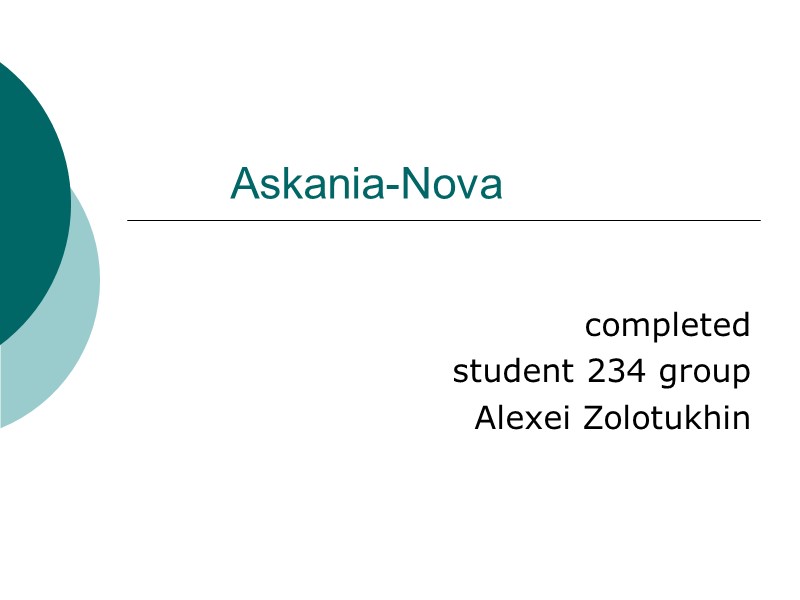
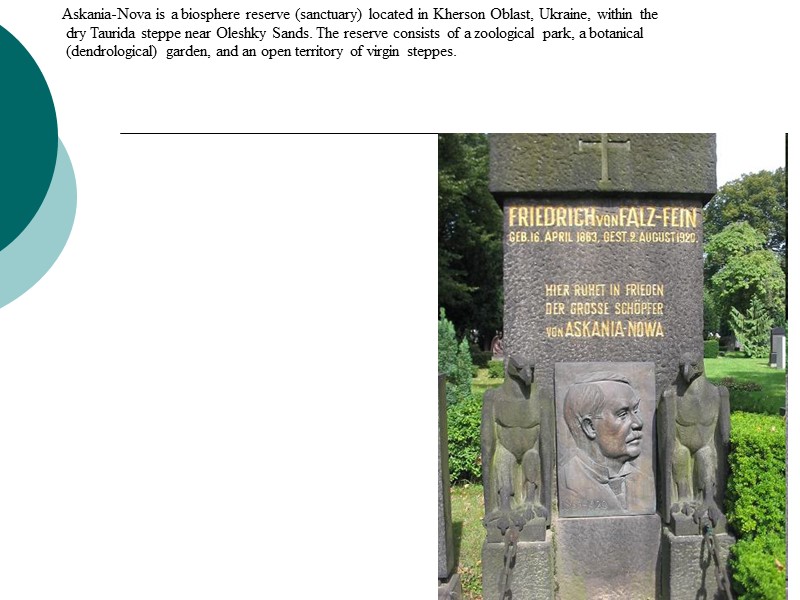
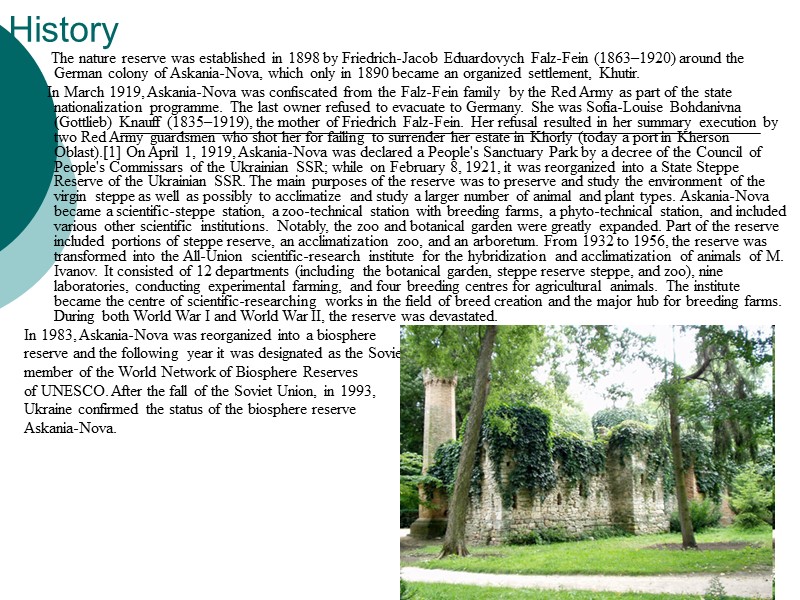
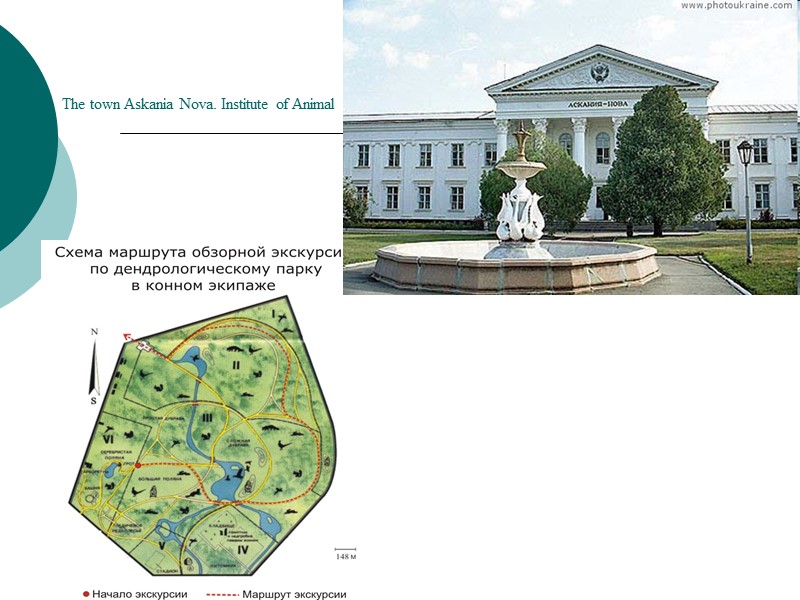
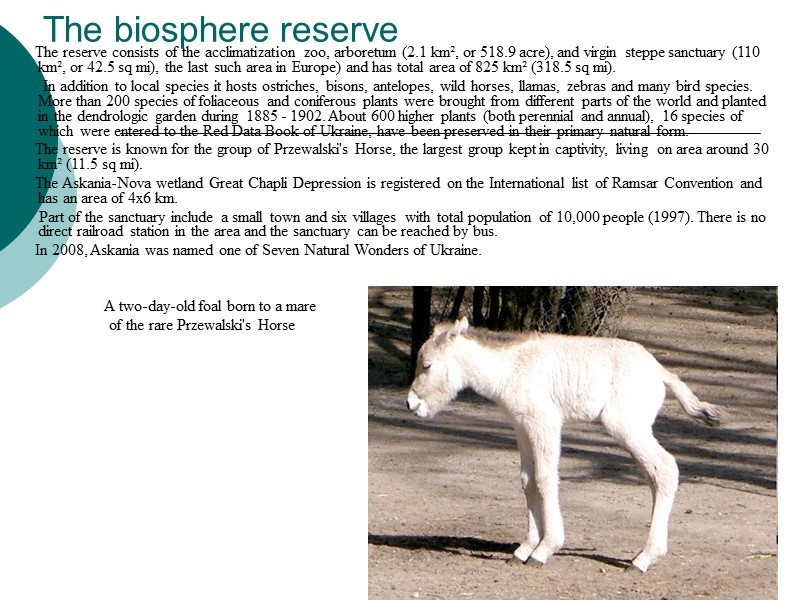
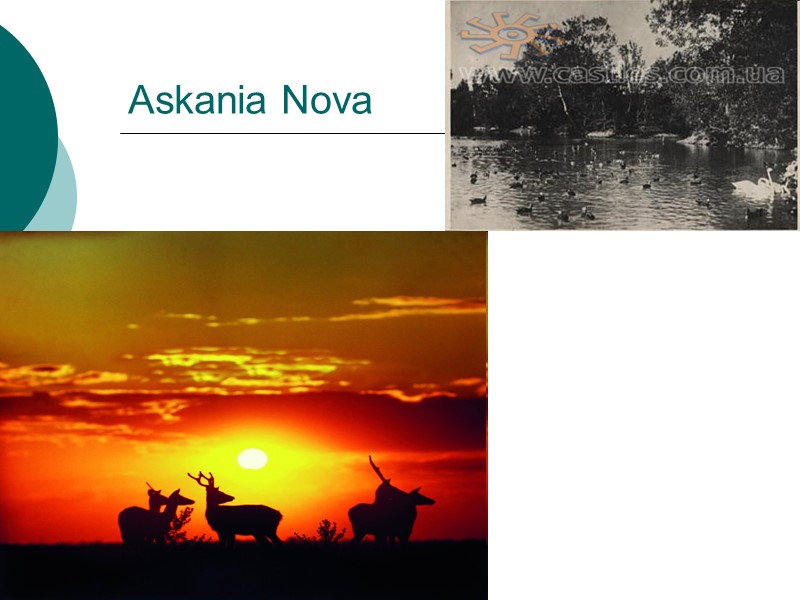

29606-askania-nova.ppt
- Количество слайдов: 7
 Askania-Nova completed student 234 group Alexei Zolotukhin
Askania-Nova completed student 234 group Alexei Zolotukhin
 Askania-Nova is a biosphere reserve (sanctuary) located in Kherson Oblast, Ukraine, within the dry Taurida steppe near Oleshky Sands. The reserve consists of a zoological park, a botanical (dendrological) garden, and an open territory of virgin steppes.
Askania-Nova is a biosphere reserve (sanctuary) located in Kherson Oblast, Ukraine, within the dry Taurida steppe near Oleshky Sands. The reserve consists of a zoological park, a botanical (dendrological) garden, and an open territory of virgin steppes.
 History The nature reserve was established in 1898 by Friedrich-Jacob Eduardovych Falz-Fein (1863–1920) around the German colony of Askania-Nova, which only in 1890 became an organized settlement, Khutir. In March 1919, Askania-Nova was confiscated from the Falz-Fein family by the Red Army as part of the state nationalization programme. The last owner refused to evacuate to Germany. She was Sofia-Louise Bohdanivna (Gottlieb) Knauff (1835–1919), the mother of Friedrich Falz-Fein. Her refusal resulted in her summary execution by two Red Army guardsmen who shot her for failing to surrender her estate in Khorly (today a port in Kherson Oblast).[1] On April 1, 1919, Askania-Nova was declared a People's Sanctuary Park by a decree of the Council of People's Commissars of the Ukrainian SSR; while on February 8, 1921, it was reorganized into a State Steppe Reserve of the Ukrainian SSR. The main purposes of the reserve was to preserve and study the environment of the virgin steppe as well as possibly to acclimatize and study a larger number of animal and plant types. Askania-Nova became a scientific-steppe station, a zoo-technical station with breeding farms, a phyto-technical station, and included various other scientific institutions. Notably, the zoo and botanical garden were greatly expanded. Part of the reserve included portions of steppe reserve, an acclimatization zoo, and an arboretum. From 1932 to 1956, the reserve was transformed into the All-Union scientific-research institute for the hybridization and acclimatization of animals of M. Ivanov. It consisted of 12 departments (including the botanical garden, steppe reserve steppe, and zoo), nine laboratories, conducting experimental farming, and four breeding centres for agricultural animals. The institute became the centre of scientific-researching works in the field of breed creation and the major hub for breeding farms. During both World War I and World War II, the reserve was devastated. In 1983, Askania-Nova was reorganized into a biosphere reserve and the following year it was designated as the Soviet member of the World Network of Biosphere Reserves of UNESCO. After the fall of the Soviet Union, in 1993, Ukraine confirmed the status of the biosphere reserve Askania-Nova.
History The nature reserve was established in 1898 by Friedrich-Jacob Eduardovych Falz-Fein (1863–1920) around the German colony of Askania-Nova, which only in 1890 became an organized settlement, Khutir. In March 1919, Askania-Nova was confiscated from the Falz-Fein family by the Red Army as part of the state nationalization programme. The last owner refused to evacuate to Germany. She was Sofia-Louise Bohdanivna (Gottlieb) Knauff (1835–1919), the mother of Friedrich Falz-Fein. Her refusal resulted in her summary execution by two Red Army guardsmen who shot her for failing to surrender her estate in Khorly (today a port in Kherson Oblast).[1] On April 1, 1919, Askania-Nova was declared a People's Sanctuary Park by a decree of the Council of People's Commissars of the Ukrainian SSR; while on February 8, 1921, it was reorganized into a State Steppe Reserve of the Ukrainian SSR. The main purposes of the reserve was to preserve and study the environment of the virgin steppe as well as possibly to acclimatize and study a larger number of animal and plant types. Askania-Nova became a scientific-steppe station, a zoo-technical station with breeding farms, a phyto-technical station, and included various other scientific institutions. Notably, the zoo and botanical garden were greatly expanded. Part of the reserve included portions of steppe reserve, an acclimatization zoo, and an arboretum. From 1932 to 1956, the reserve was transformed into the All-Union scientific-research institute for the hybridization and acclimatization of animals of M. Ivanov. It consisted of 12 departments (including the botanical garden, steppe reserve steppe, and zoo), nine laboratories, conducting experimental farming, and four breeding centres for agricultural animals. The institute became the centre of scientific-researching works in the field of breed creation and the major hub for breeding farms. During both World War I and World War II, the reserve was devastated. In 1983, Askania-Nova was reorganized into a biosphere reserve and the following year it was designated as the Soviet member of the World Network of Biosphere Reserves of UNESCO. After the fall of the Soviet Union, in 1993, Ukraine confirmed the status of the biosphere reserve Askania-Nova.
 The town Askania Nova. Institute of Animal
The town Askania Nova. Institute of Animal
 The biosphere reserve The reserve consists of the acclimatization zoo, arboretum (2.1 km², or 518.9 acre), and virgin steppe sanctuary (110 km², or 42.5 sq mi), the last such area in Europe) and has total area of 825 km² (318.5 sq mi). In addition to local species it hosts ostriches, bisons, antelopes, wild horses, llamas, zebras and many bird species. More than 200 species of foliaceous and coniferous plants were brought from different parts of the world and planted in the dendrologic garden during 1885 - 1902. About 600 higher plants (both perennial and annual), 16 species of which were entered to the Red Data Book of Ukraine, have been preserved in their primary natural form. The reserve is known for the group of Przewalski's Horse, the largest group kept in captivity, living on area around 30 km² (11.5 sq mi). The Askania-Nova wetland Great Chapli Depression is registered on the International list of Ramsar Convention and has an area of 4x6 km. Part of the sanctuary include a small town and six villages with total population of 10,000 people (1997). There is no direct railroad station in the area and the sanctuary can be reached by bus. In 2008, Askania was named one of Seven Natural Wonders of Ukraine. A two-day-old foal born to a mare of the rare Przewalski's Horse
The biosphere reserve The reserve consists of the acclimatization zoo, arboretum (2.1 km², or 518.9 acre), and virgin steppe sanctuary (110 km², or 42.5 sq mi), the last such area in Europe) and has total area of 825 km² (318.5 sq mi). In addition to local species it hosts ostriches, bisons, antelopes, wild horses, llamas, zebras and many bird species. More than 200 species of foliaceous and coniferous plants were brought from different parts of the world and planted in the dendrologic garden during 1885 - 1902. About 600 higher plants (both perennial and annual), 16 species of which were entered to the Red Data Book of Ukraine, have been preserved in their primary natural form. The reserve is known for the group of Przewalski's Horse, the largest group kept in captivity, living on area around 30 km² (11.5 sq mi). The Askania-Nova wetland Great Chapli Depression is registered on the International list of Ramsar Convention and has an area of 4x6 km. Part of the sanctuary include a small town and six villages with total population of 10,000 people (1997). There is no direct railroad station in the area and the sanctuary can be reached by bus. In 2008, Askania was named one of Seven Natural Wonders of Ukraine. A two-day-old foal born to a mare of the rare Przewalski's Horse
 Askania Nova
Askania Nova
 Thank you for your attention!
Thank you for your attention!
